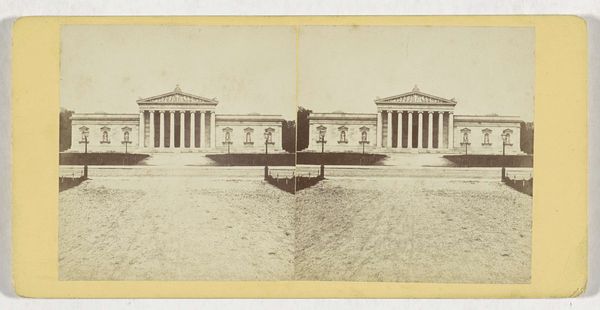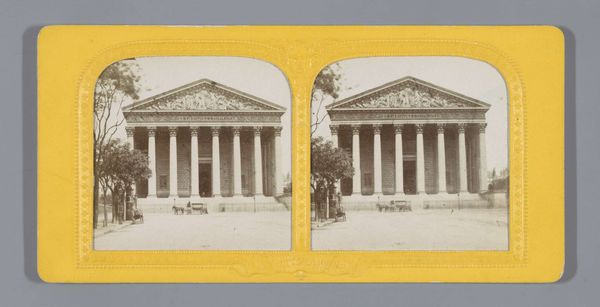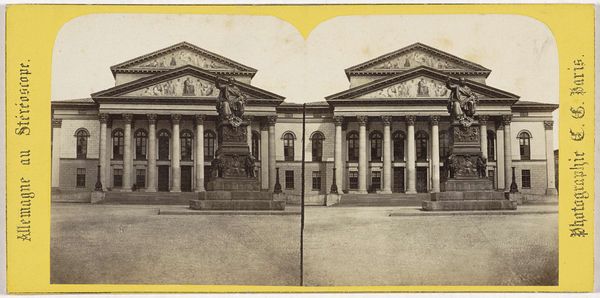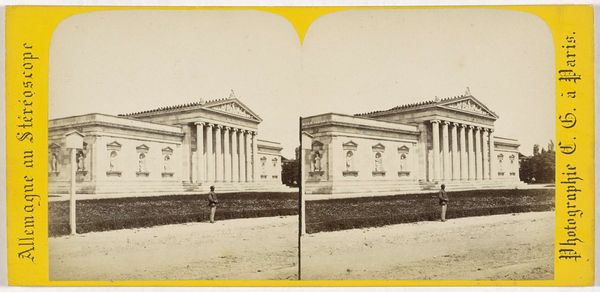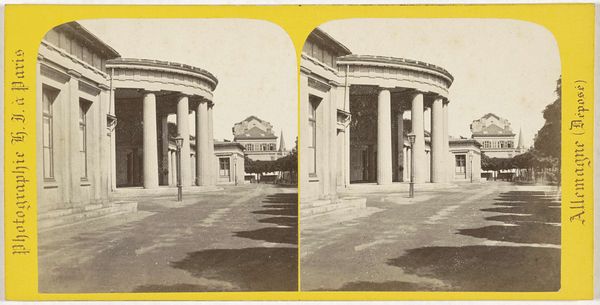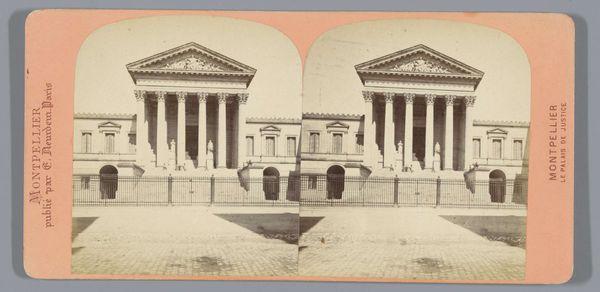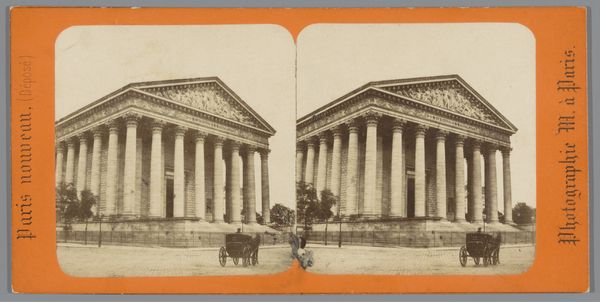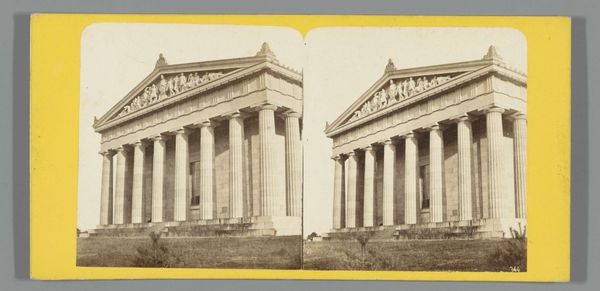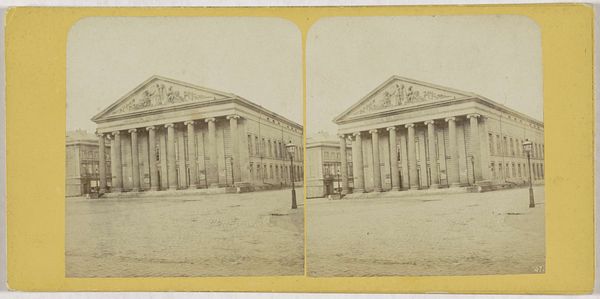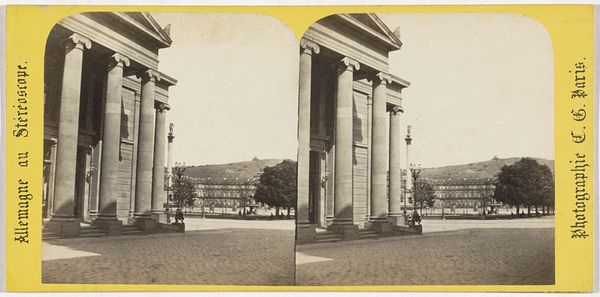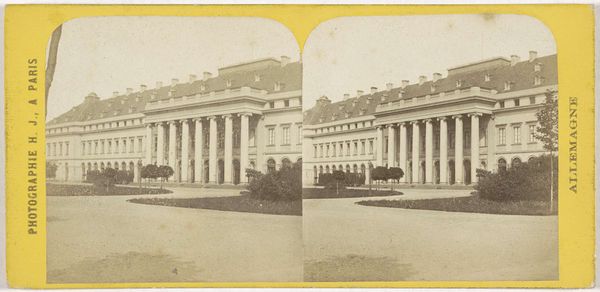
print, photography
#
neoclassicism
# print
#
photography
#
cityscape
Dimensions: height 86 mm, width 176 mm
Copyright: Rijks Museum: Open Domain
Curator: Looking at this print by Johann Friedrich Stiehm, dating from around 1868 to 1870, I immediately get a sense of solemn grandeur. Editor: It does feel weighty, doesn't it? The strong, vertical lines of the columns, the somewhat austere neoclassical design… it projects power, almost a kind of impenetrable stoicism. Curator: That’s exactly the feeling I get. Neoclassicism, of course, always evokes that conscious connection to ancient Rome and Greece, with the architectural choices communicating ideals of order and civic virtue. The building portrayed here is the Neue Wache in Berlin. Notice how it dominates the landscape, both physically and symbolically. Editor: Considering its history, it’s interesting to view this through a lens of the evolving public role of such monuments. It began as a guardhouse for the Prussian Royal Family but morphed considerably over time. The image projects a straightforward military might; one would never guess its rather troubled symbolic journey through different regimes. Curator: That tension is palpable even here, decades before its transformations. What’s intriguing to me is how this building, initially designed to protect the monarchy, would later become a space dedicated to remembering war victims. It becomes an architectural palimpsest. Editor: Exactly, a surface layered with multiple, often contradictory meanings. Viewing this photographic print allows us to reflect on the monument’s inherent capacity to be repurposed, resymbolized. This image hints at what's to come, showing an emerging national identity solidified through ordered urban spaces. Curator: You’re right, and I wonder about the effect this visual language of neoclassical order has on the collective psyche. Does it offer solace? A sense of permanence amid change? Editor: Or perhaps a veiled authoritarianism, framing public memory within the constraints of the state's own narrative? Curator: It's that very ambiguity that makes this cityscape so compelling, prompting endless questions about the interplay between art, power, and public memory. Editor: Indeed. It's a reminder that the stories buildings tell are never fixed, but rather shift with each passing generation.
Comments
No comments
Be the first to comment and join the conversation on the ultimate creative platform.
